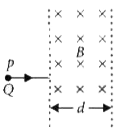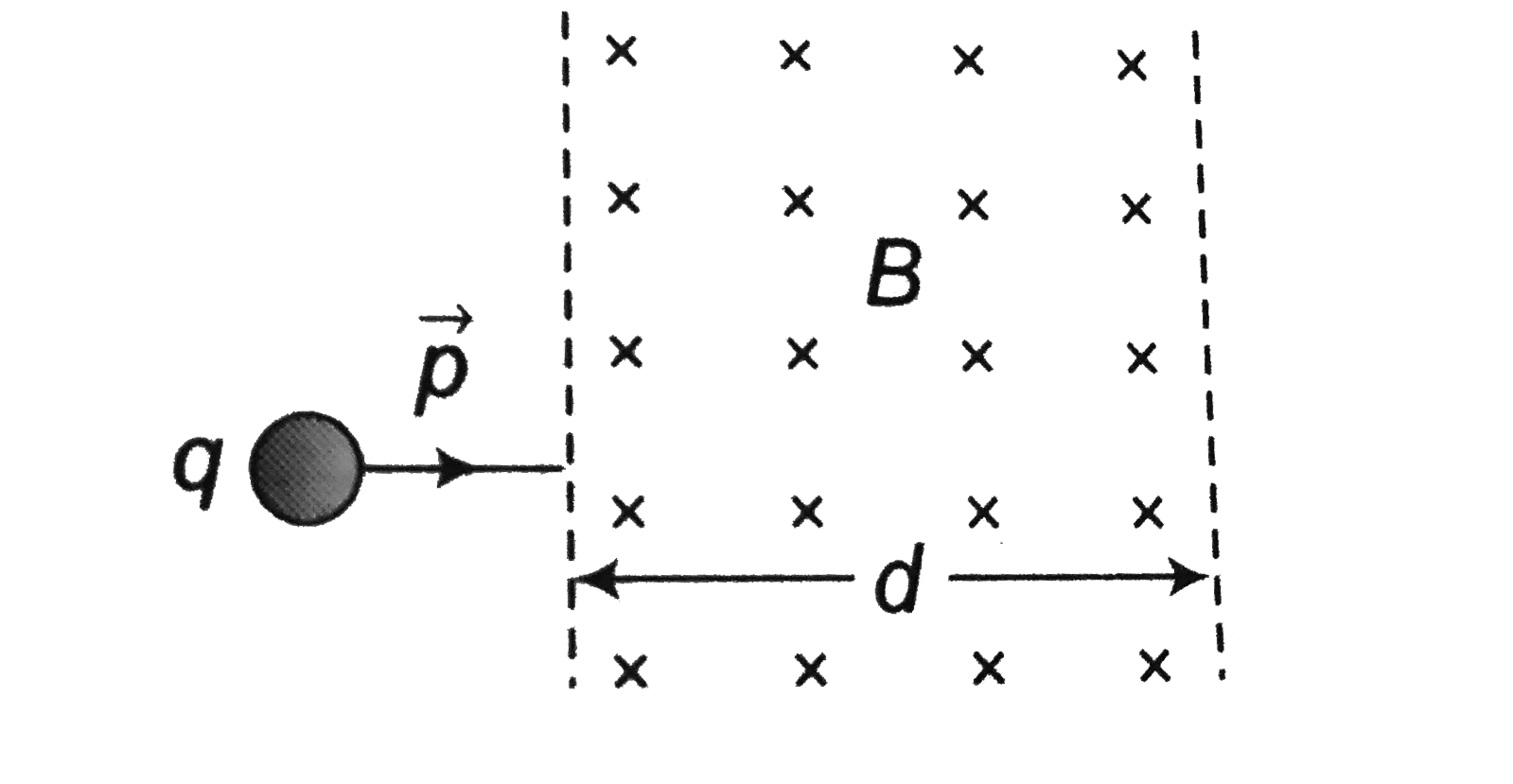A particle with charge q, moving with a momentum p, enters a uniform magnetic field normally. The magnetic field has magnitude B and is confined to a region of width d, where d<pBq , The particle is deflected by an angle q in crossing the field. Then

sinθ=Bqdp
sinθ=pBqd
sinθ=Bpqd
sinθ=pdBq
The correct Answer is:A
Step by step video, text & image solution for A particle with charge q, moving with a momentum p, enters a uniform magnetic field normally. The magnetic field has magnitude B and is confined to a region of width d, where d lt (p)/(Bq) , The particle is deflected by an angle q in crossing the field. Then by Physics experts to help you in doubts & scoring excellent marks in Class 12 exams.
Topper's Solved these Questions
Similar Questions
Knowledge Check
- Question 1 - Select One
A particle with charge Q, moving with a momentum p, enters a uniform magnetic field normally. The magnetic field has magnitude B and is confined to a region of width d, where d<PBQ. The particle is deflected by an angle θ in crossing the field. Then
 Asin θ=BQdpBsinθ=pBQdCsinθ=BpQdDsinθ=pdBQ
Asin θ=BQdpBsinθ=pBQdCsinθ=BpQdDsinθ=pdBQ - Question 2 - Select One
A particle with charge q, moving with a momentum p, enters a uniform magnetic field normally. The magnetic field has magnitude B and is confined to a region of width d, where d<pBq. If the particle is deflected by an angle θ in crossing the field then
 Asinθ=BqdpBsinθ=pBqdCsinθ=BpqdDsinθ=pdBq
Asinθ=BqdpBsinθ=pBqdCsinθ=BpqdDsinθ=pdBq - Question 3 - Select One
A charged particle enters a uniform magnetic field perpendicular to it. The magnetic field
Aincreases the K.E. of the particleBdecreases the K.E. of the particleCchanges the direction of motion of the particleDdoes both (a) and ( c)
When a charged particle enters a uniform magnetic field its kinetic energy
View SolutionWhen a charged particle enters a uniform magnetic field its kinetic energy
View SolutionA particle of mass m and charge Q moving with a velocity v enters a region on uniform field of induction B Then its path in the region is s
View SolutionA charged particle enters into a uniform magnetic field the parameter that remains constant is
View SolutionA charge particle moves with velocity →V in a uniform magnetic field →B . The magnetic force experienced by the particle is
View Solution

